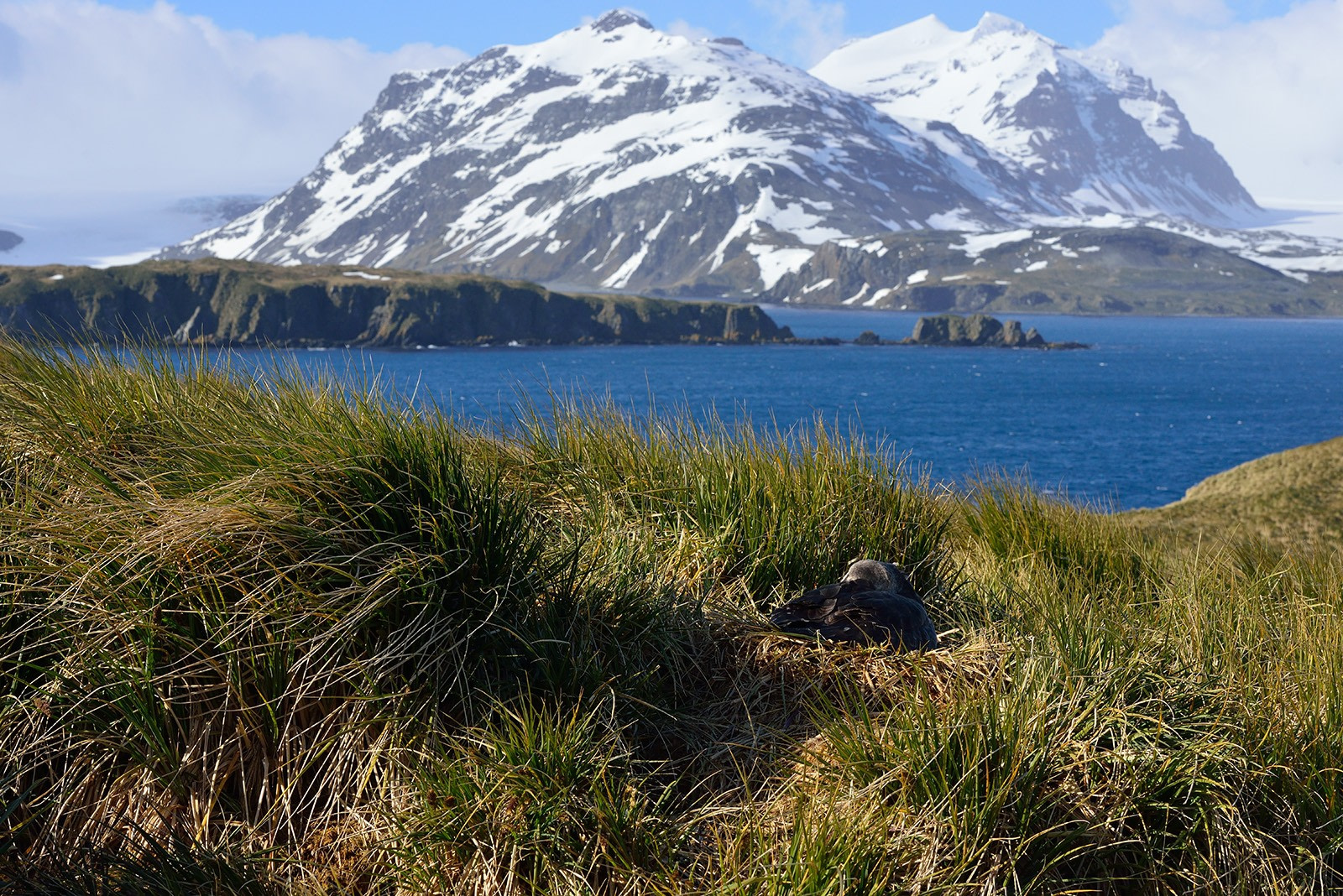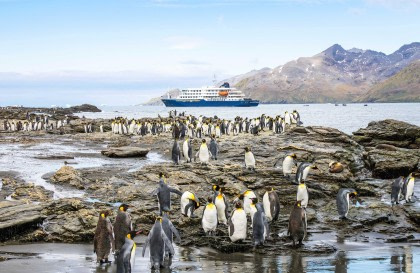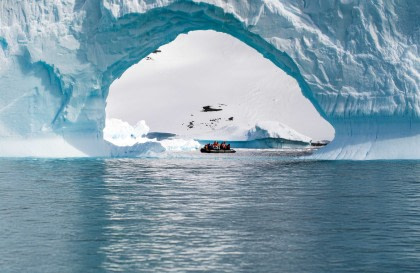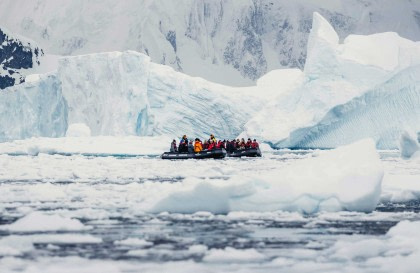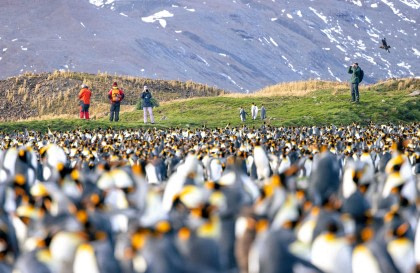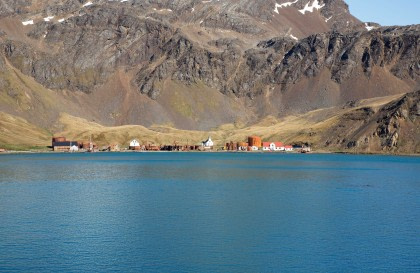Flowers in Antarctica
The polar regions are one of the most inhospitable environments for plants and animals to live in. In this region life faces a range of difficulties including low temperatures, high winds, solar radiation and freezing of cells. Life is made even more difficult when the Antarctic continent is plunged into darkness for during winter and then full light during the summer. During these long winter months temperatures plummet down to -60°C or lower.
Another extremity life faces is that despite air temperatures being freezing the sunshine warms soil, rock surfaces and vegetation with temperatures on these surfaces reaching 20-30°C within minutes or hours and 40-60°C, and even 100°C over a period of a year. Snow also provides a thermal insulation for life to survive in such extremities. As well as low and fluctuating temperatures life on Antarctica face numerous environmental challenges including lack of access to liquid water.
Availability of liquid water is limited as while parts of the Antarctic Peninsula receive up to 3,000 mm (120 inches) of rain per year liquid water in the rest of the continent remains frozen for most of the time, resulting in Antarctica being as dry as desert.
Long sunny days for plant life
Plant life nonetheless can survive in Antarctica as despite the high latitude resulting in the sun being low in the sky the long summer days means the solar energy received at ground level can accumulate to give plants greater daily totals that at more temperate latitudes. This means that plants have greater productivity from photosynthesis. Nevertheless, the downside is that plants face light stress. The high reflectance of snow and ice can increase the amount of radiation received on adjacent ice-free ground.
Ozone-hole damage to plants
The ozone hole provides another challenge for plants to survive and thrive in Antarctica as the hole, which forms in spring, results in high-levels of biologically damaging UV-B radiation reaching the ground. The issue is this is the same amount of radiation normally experienced during mid-summer, however organisms in Antarctica during spring are still inactive.
Exposed rocks provide a home for life
Any exposed rocks in Antarctica can be hypothetically colonised by organisms with the right attributes. Rocks and simple soil surfaces in the Antarctic Peninsula are colonised by lichens, mosses, micro-organisms and some invertebrate animals. At some locations seasonal snow and ice cover can provide shelter for life from the extreme thermal and radiation conditions.
During the summer period the warming of rocks and soil leads to melting of ice in the surrounding snow providing liquid water for life to thrive on. The length of time this water is available can range from weeks to months. This water can also percolate through the surface of some rocks providing habitats for life to thrive in.
The Antarctic Peninsula an ideal home
The Antarctic Peninsula is in particular one part of Antarctica that is thriving with life due to 3 percent of its total area being ice-free, compared to 0.3 percent for the rest of the continent. Life here thrives amongst rock, boulder and rubble surfaces that appear to most people as being barren. The soil is little more than fragmented rock debris and contains very limited amounts of nutrients and carbon.
The rock fragments are created by glacial action, water (from freeze-thaw cycles), salt weathering, heating and wind action. Lichens also contribute to the erosion of the surface. Under the soil is typically a layer of permafrost. While permafrost does not provide a habitat for life to thrive in layer of wet soil that covers it – which only freezes in winter – does support biological communities.
An unstable soil environment
Making life even more tougher to survive in Antarctica is the constant impacts of rock debris, snow or ice crystals on exposed soil. Soil movement during the freeze-thaw cycles also limits the abilities of vegetation to take hold. Beneath the surface where it is sufficiently stable vegetation communities can thrive. Meanwhile rock surfaces and provide places for lichens and crevices for algae and mosses.
Zones of Antarctica
Life on Antarctica is not a random event nonetheless. Instead, what type of life form is present is dependent on the zone it is in on the continent. The continent can be divided into three separate regional or biogeographical divisions: The Sub-Antarctic, maritime and continental zones. The maritime zone is strongly influenced by its proximity to the ocean, particularly during the summer months when the sea is largely free of ice. As a result, average temperatures range from 1-4°C during the summer and -10 to -15°C during the winter: Far less extreme than in the continent.
Life thriving in the maritime zone
It is in the maritime zone that life thrives with mosses, liverworts and lichens the main species of vegetation present. There is in fact over 100, 25 and 250 species respectively. Plant life here typically is in patches separated by areas of bare ground and rock. Any newly available ground is quickly snapped up with visible clumps of vegetation appearing within years of the ice retreating. One of the most amazing aspects of life in the maritime environment is the plant’s longevity: While individual moss clumps have short life spans some lichens live for 300-600 years and a few peat banks have accumulated over 5,000-6,000 years.
Flowers in Antarctica
There are only two species of flowering vegetation in Antarctica: Antarctic hair grass Deschampsia antarctica and the Antarctic pearlwort Colobanthus quitensis, both of which are found in the Antarctic Peninsula. Of interest is that in the similar environment of the Arctic the area of Svalbard has over 100 species of flowering plant: An indicator of how extreme the environment is in Antarctica for life to thrive and diversify. Nonetheless, these two plants are highly successful in making Antarctica home with both appearing right throughout the maritime zone of Antarctica. In addition to the flowers, grass plants have managed to thrive with some even forming lawns of several tens of square metres on islands of the Sub-Antarctic.
Midget life
There are no land or freshwater vertebrates on the Antarctic continent although there are large concentrations of marine vertebrates including seals and penguins. There is however soil invertebrates including worms and mites. These species are incredibly small with mites only 1-2 mm long. Freshwater invertebrates including crustaceans can be found in abundant numbers in small melt pools and larger lakes. There is only one type of flying insect found in the Antarctic region, the midge that is limited to the South Shetland Islands and South Georgia.
Warm but tough conditions in hotspots
In Antarctica there is also life to be found in geothermally active areas that contain fumaroles, warmed ground and heated pools or springs. These locations provide warmth and liquid water. However, life here is also challenging with chemical weathering, low pH and high mineral and sulphur levels.
The ups and downs of climate change
With climate change the Antarctic Peninsula is one of the fastest warming places in the world along with Arctic North America and the Tibetan Plateau. Warming temperatures will likely see more energy being available for organisms, enabling them to be more active and grow and reproduce faster. Warming will also lead to more melt-water providing liquid water for species to survive on. However, in the longer term Antarctic species may become more vulnerable from increased competition: Because their biology has adapted over a long period of evolution to enable survival under extreme conditions it has come at the expense of being able to cope with biological stresses including competition.
